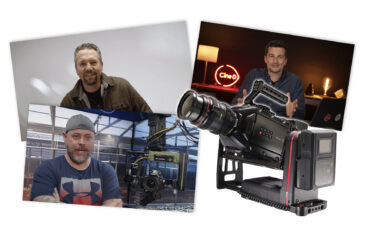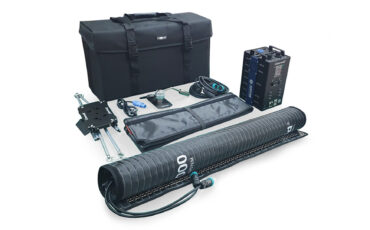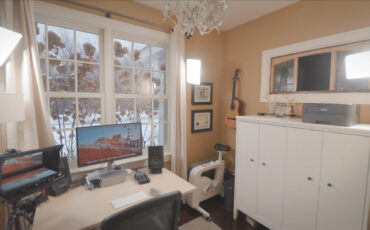Cineroid DeepEye Studio – A Fully Robotic Studio Operated by a Single Person
During IBC 2024, Nino had the chance to interview SoonGi Jang from Cineroid and Eungiu Lee from DeepEye Studio. They told us about their joint project, DeepEye Studio, a hardware and software-based fully robotic studio that generates videos and can be operated by one person, saving money and time in the long run.
Cineroid is a cinema and broadcasting equipment company known for its lighting solutions, such as the Cineroid Jupiter 500W and 1000W or the Cineroid TL120.
A solution in four simple steps
As SoonGi Jang and Eungiu Lee told us, the idea behind DeepEye Studio is to create a studio where anyone can easily create professional content. The system is equipped with robotic Flycam cameras, automated lights, and software for testing, editing, and rendering. The final result can be obtained in ten minutes and requires only one person crew.

The process that makes DeepEye Studio unique looks very simple. First, users place the object or person to be filmed. Next, they select an adjustable scenario from the 3D animation software. Then, the data is sent to the XL engine in 2 milliseconds to process the information. After this, the system tests and generates automatic camera and light movements and adjustments, shoots automatically, and handles the editing and rendering. Finally, the software generates the images and clips.
DeepEye Studio can be used as a green screen and virtual production studio. Using flying cameras and robots allows for dynamic angles and omnidirectional movements. For now, the company is using Panasonic box-shaped cameras. Still, the system can control other cameras if they supply an SDK software development kit or API, which is necessary to program and connect them. Any light supported by DMX could be used with the system regarding lighting compatibility.

Who is DeepEye Studio for?
When talking about potential users and the market niche for DeepEye Studio, SoonGi Jang and Eungiu Lee told us that production companies or broadcast stations are not the main ones. The target clients are industrial companies that want to insource their video productions, like manufacturers, fashion companies, home shopping channels, etc. For example, home shopping channels that advertise many products with pictures and videos but have limited human resources would save time and money by using DeepEye Studio.

A studio in different flavors
DeepEye Studio is available in different standard pre-programmed and prepared models, with a minimum required space of 6x8x4.5 meters and a maximum of 20x20x10m. However, the system is open to customization if clients have special requirements, such as the precision or speed of the robot’s movements.
Given the system’s complexity, a construction process follows once the client selects the desired model, and an engineer sets up the final model in two or three days. DeepEye Studio already has one system running in Korea and will soon install another one.
Price and availability
DeepEye Studio, as you may have imagined at this point, is not for everyone’s pockets. The studio, including the robotic arms, the fly-cams, software, etc., costs around $300.000, and the software is paid with an annual subscription. Cineroid and DeepEye studio are working to show the studio next year at IBC 2025. For more information, please visit DeepEye Studio’s website.
What do you think about DeepEye Studio? Do you think it is a new way for companies to produce their own content? Let us know your thoughts in the comments below!


























